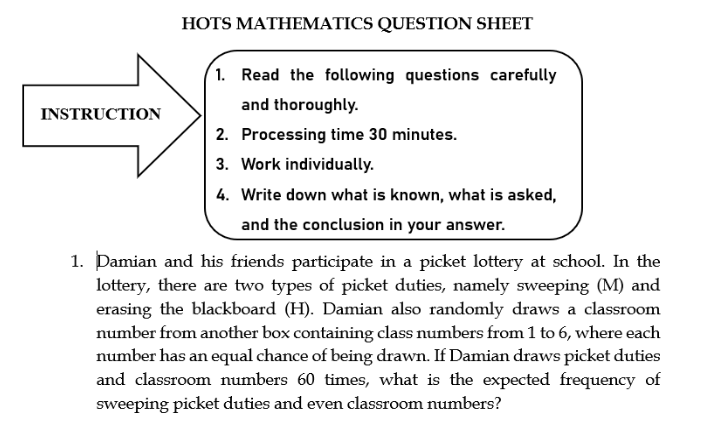Senior High School Students’ Difficulties in Solving HOTS Probability Problem and Their Scaffolding Based on Learning Styles
DOI:
https://doi.org/10.26740/jimes.v3n1.p19-32Abstract
This study aims to identify the difficulties experienced by high school students in solving higher-order thinking skills (HOTS) questions on probability and to analyze the scaffolding provided to help students overcome these difficulties based on visual, auditory, and kinesthetic learning styles. HOTS questions require the students to think creatively, critically, and logically, which are commonly hindered by the abstract nature of the concept of probability. This qualitative descriptive study involved three students classified based on their learning styles. Data were collected using a learning style questionnaire, HOTS test questions, and interviews, and were analyzed via data reduction, data display, and conclusion drawing. The results showed that visual learners struggled with transformation and process skills, auditory learners with process skills, and kinesthetic learners with both transformation and process skills. To remedy these issues, scaffolding was created according to each learning style. Visual learners were assisted by the use of visual comparison charts and Figure-based guidelines, auditory learners responded to guided inquiry questions and oral explanations, and kinesthetic learners performed well through action tasks and movement-based simulations. These individualized scaffolding strategies allowed the students to overcome conceptual and procedural barriers, thereby improving their ability to answer HOTS probability questions more effectively. This study emphasizes the importance of adaptive support tailored to personal learning styles to increase the mathematical understanding of students.

Downloads
Published
How to Cite
Issue
Section
License
Copyright (c) 2025 Journal of the Indonesian Mathematics Education Society

This work is licensed under a Creative Commons Attribution 4.0 International License.
 Abstract views: 164
,
Abstract views: 164
, PDF Downloads: 267
PDF Downloads: 267



